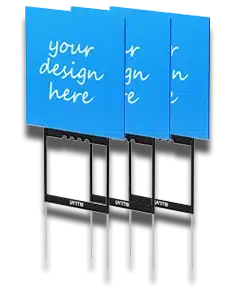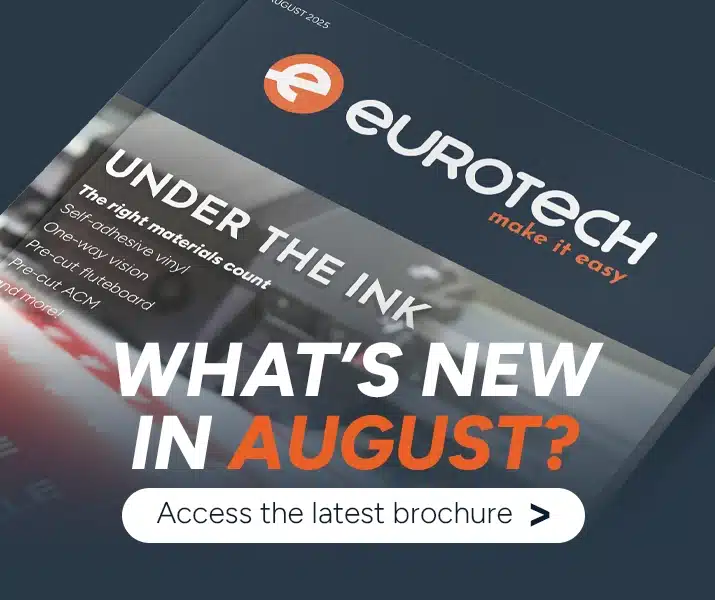
Maximising ROI – Effective Pricing Strategies for Sign Shops
Pricing is one of the most critical decisions a sign shop owner can make. Get it right, and you’ll enjoy sustainable profits and a steady flow of clients. Get it wrong, and you risk losing business or, worse, operating at a loss. This article dives into actionable strategies to help sign shops in Australia maximise their return on investment (ROI) through effective pricing models.
Understanding ROI and Its Importance in Pricing
ROI measures the profitability of your investments—whether it’s new equipment, staff training, or the time spent creating custom signage. To calculate it, divide your net profit by your total investment, then multiply by 100.
A key factor in ROI is pricing. If your prices don’t account for costs, labour, and market expectations, your profits shrink. To achieve sustainable pricing, it’s essential to understand your shop’s unique cost structure and client base.
1. Identify and Analyse Costs
Before you can price effectively, you need a clear understanding of all your costs. For sign shops, this can include:
- Material Costs: Vinyl, acrylic, aluminium, or other raw materials.
- Labour Costs: Wages for design, production, and installation teams.
- Overheads: Rent, utilities, insurance, and equipment maintenance.
- Technology Costs: Software licenses, printing machinery, or cutting tools.
In Australia, costs can vary depending on the region. For example, material imports may cost more in remote areas due to shipping fees. Use accounting software to track these expenses accurately.
2. Choose the Right Pricing Model
Several pricing models can help maximise ROI. The best choice depends on your shop’s market position and business objectives.
A. Cost-Plus Pricing This is a straightforward approach where you calculate the total cost of a project and add a markup. For instance:
- Cost of production = $500
- Desired markup = 50%
- Final price = $750
While easy to calculate, this method doesn’t account for market demand or competitor pricing.
B. Value-Based Pricing Value-based pricing focuses on the perceived value to the client. For example, a high-end retail client might value a bespoke sign more than a small café owner. If the client’s expected ROI from your signage is $20,000 in increased foot traffic, they’ll be willing to pay more.
C. Tiered Pricing This involves offering multiple pricing options based on features or service levels. For example:
- Basic Package: Standard materials, no custom design ($500).
- Premium Package: Custom design, high-quality materials ($1,000).
- Luxury Package: Full-service design, installation, and maintenance ($1,500).
Tiered pricing works well for attracting clients with varying budgets.
D. Competitor-Based Pricing Research local competitors to understand market rates. However, avoid undercutting prices to the point of eroding profitability. Instead, differentiate yourself through superior service or unique offerings.
3. Factor in Time as a Cost
Time is money, especially in a labour-intensive industry like signage. Break projects down into stages—design, production, and installation—and estimate the time required for each. For example:
- Design phase: 5 hours @ $80/hour = $400
- Production phase: 4 hours @ $70/hour = $280
- Installation phase: 3 hours @ $100/hour = $300
- Total labour cost = $980
Incorporate these costs into your pricing, ensuring no stage of the process is undervalued.
4. Account for Market Trends
The Australian signage industry has seen growing demand for digital signage, eco-friendly materials, and customisation. Adjust your pricing strategy to reflect these trends:
- Digital Signage: Clients may pay more for technologically advanced options like LED displays or interactive screens.
- Sustainability: Charge a premium for using environmentally friendly materials, as this aligns with many companies’ green initiatives.
- Customisation: Bespoke designs or intricate installations can justify higher fees.
By aligning pricing with these trends, you can appeal to high-value clients willing to pay for premium services.
5. Offer Discounts Strategically
Discounting is a double-edged sword. While it can attract customers, it may also erode your perceived value. Use discounts strategically:
- Offer bulk discounts for large orders, such as supplying multiple retail locations.
- Provide loyalty discounts to repeat clients.
- Run promotions during slower periods to fill gaps in your production schedule.
Always make it clear that discounts are conditional or time-limited, reinforcing that your standard pricing reflects the value of your work.
6. Communicate Your Value
Price objections often stem from a lack of understanding about the value you provide. Educate your clients by:
- Explaining your process, from design to installation.
- Showcasing the quality of your materials and craftsmanship.
- Sharing case studies or testimonials that highlight the ROI your signage delivers.
For example, if a retail client sees a 20% increase in foot traffic due to your storefront signage, use this success story in your marketing.
7. Monitor and Adjust Regularly
Pricing isn’t a set-and-forget strategy. Economic conditions, material costs, and market demand can change rapidly. Review your pricing at least annually, and adjust based on:
- Inflation or increased supplier costs.
- New competitors entering the market.
- Shifts in customer preferences or industry standards.
For example, if the cost of aluminium rises by 10%, your pricing should reflect this to maintain profit margins.
8. Leverage Technology for Pricing Insights
Investing in pricing software can simplify decision-making. These tools analyse historical data, market trends, and competitor prices to suggest optimal rates. Some popular options include QuickBooks, Xero, or industry-specific platforms like Clarity Software.
9. Upsell and Cross-Sell to Boost ROI
Maximise each transaction by offering complementary services or products. For example:
- Suggest maintenance packages for clients with digital signage.
- Upsell premium materials or finishes for a more polished look.
- Cross-sell window decals, banners, or promotional posters.
By increasing the average value of each sale, you’ll improve ROI without needing to attract more clients.
10. Build Long-Term Relationships
Retaining clients is cheaper than acquiring new ones, and long-term clients are often willing to pay premium prices. Focus on providing excellent service, meeting deadlines, and exceeding expectations. Offer incentives for repeat business, such as discounted rates for ongoing projects.
What can we conclude?
Pricing strategies for sign shops require careful planning and regular adjustment. By understanding your costs, choosing the right pricing model, and aligning with market trends, you can maximise ROI while maintaining competitive pricing. Remember, effective pricing isn’t just about numbers—it’s about communicating the value of your services to clients and delivering on your promises.
With these strategies in place, your sign shop will be well-positioned for sustainable growth and profitability.




